In brief: Intel has unveiled its 11th-gen Core "Tiger Lake" processors. The new line of silicon features Iris Xe graphics and uses Intel's latest 10nm "SuperFin" process. Tiger Lake is aimed at thin-and-light laptops because they offer higher performance with better power efficiency. It also claims to outperform AMD's Ryzen 7 4800U.
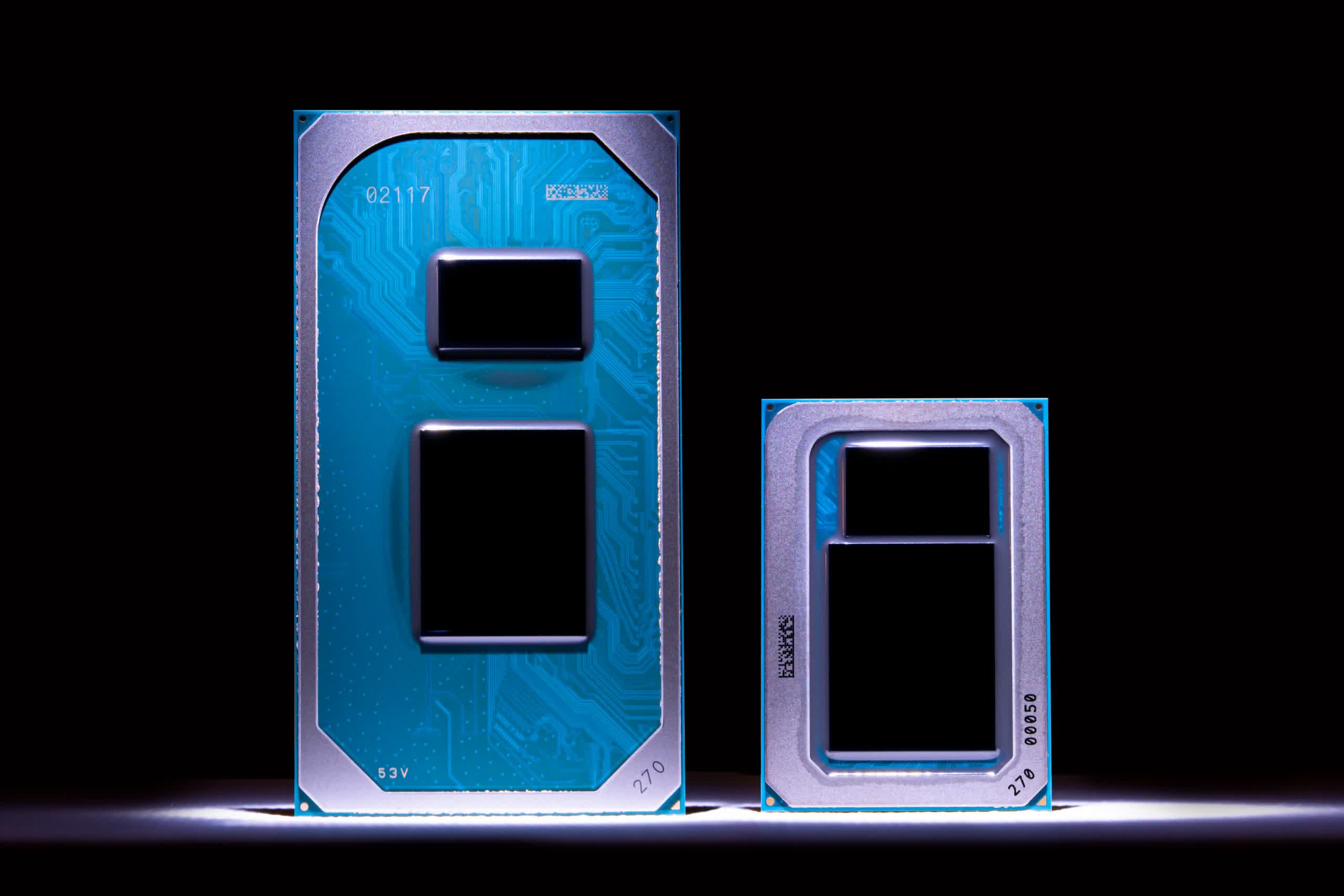
The new processors are part of the Intel Evo platform, which was also introduced today during its livestream. The Evo brand is an umbrella for laptop processors design to Project Athena specifications, which the company debuted last year.
The company is expecting more than 20 laptop designs sporting the Evo badge to be released this year.
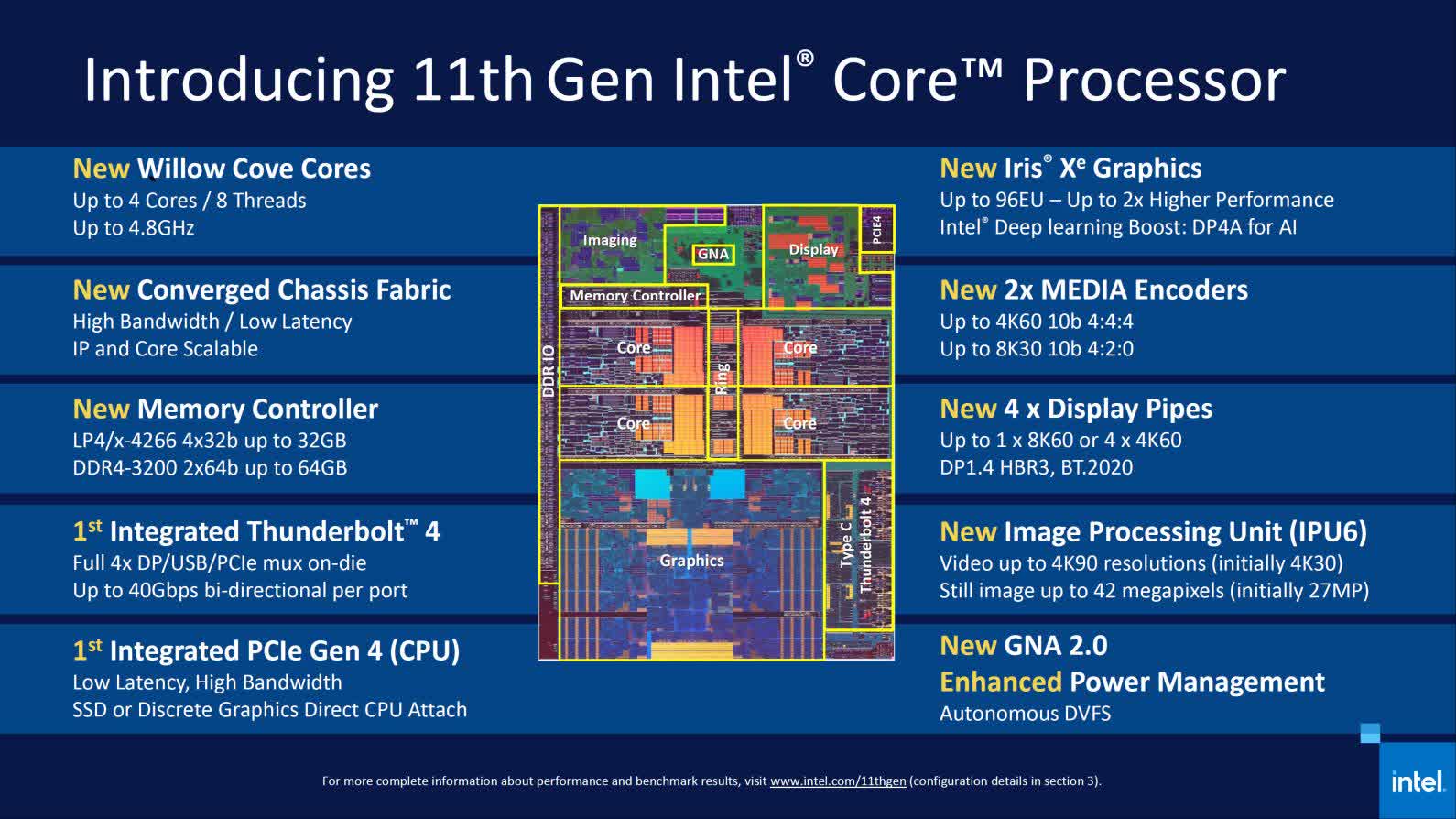
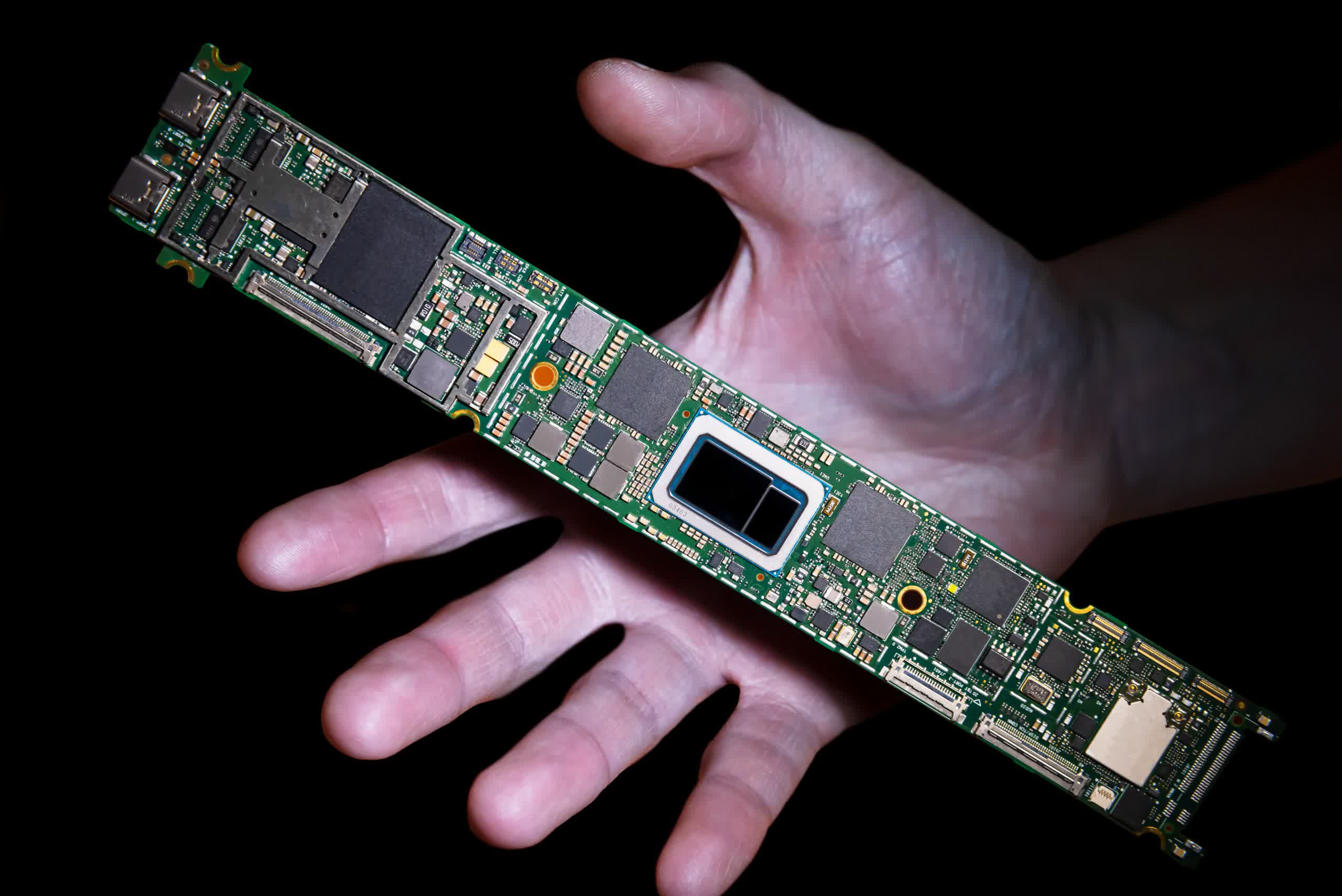
There are nine Tiger Lake processors in all, compiled into two groups—five in the UP3 family and four in the UP4 family, formerly the U-series and Y-series. Both sets have OEM-configurable TDP settings ranging from 12-28W on UP3 chips and 7-15W on UP4.
| CPU | Graphics | Cores / Threads | Graphics (EUs) | Cache | Memory | Operating Range | Base Freq (GHz) | Max Single Core Turbo (GHz, up to) | Max All Core Turbo (GHz, up to) | Graphics Max Freq (GHz, up to) | |||
| UP3 | Core i7-1185G7 | Intel Iris Xe | 4/8 | 96 | 12MB | DDR4-3200LPDDR4x-4266 | 12-28W | 3.0 | 4.8 | 4.3 | 1.35 | ||
| Core i7-1165G7 | Intel Iris Xe | 4/8 | 96 | 12MB | DDR4-3200LPDDR4x-4266 | 12-28W | 2.8 | 4.7 | 4.1 | 1.30 | |||
| Core i5-1135G7 | Intel Iris Xe | 4/8 | 80 | 8MB | DDR4-3200LPDDR4x-4266 | 12-28W | 2.4 | 4.2 | 3.8 | 1.30 | |||
| Core i3-1125G4 | Intel UHD Graphics | 4/8 | 48 | 8MB | DDR4-3200LPDDR4x-3733 | 12-28W | 2.0 | 3.7 | 3.3 | 1.25 | |||
| Core i3-1115G4 | Intel UHD Graphics | 2/4 | 48 | 6MB | DDR4-3200LPDDR4x-3733 | 12-28W | 3.0 | 4.1 | 4.1 | 1.25 | |||
| - | |||||||||||||
| UP4 | Core i7-1160G7 | Intel Iris Xe | 4/8 | 96 | 12MB | LPDDR4x-4266 | 7-15W | 1.2 | 4.4 | 3.6 | 1.1 | ||
| Core i5-1130G7 | Intel Iris Xe | 4/8 | 80 | 8MB | LPDDR4x-4266 | 7-15W | 1.1 | 4.0 | 3.4 | 1.1 | |||
| Core i3-1120G4 | Intel UHD Graphics | 4/8 | 48 | 8MB | LPDDR4x-4266 | 7-15W | 1.1 | 3.5 | 3.0 | 1.1 | |||
| Core i3-1110G4 | Intel UHD Graphics | 2/4 | 48 | 6MB | LPDDR4x-4266 | 7-15W | 1.8 | 3.9 | 3.9 | 1.1 | |||
Considered the flagship of the Tiger Lake line, the Intel Core i7-1185G7 is a quad-core/8-thread processor featuring 1.35GHz Iris Xe graphics with 96 EU and 12MB of L3 cache. It has a base frequency of 3GHz, but can be clocked up to 4.8 in Turbo mode.
Intel claims it provides "more than a generational leap in performance" in early benchmarks compared with the previous generation of U-series chips.
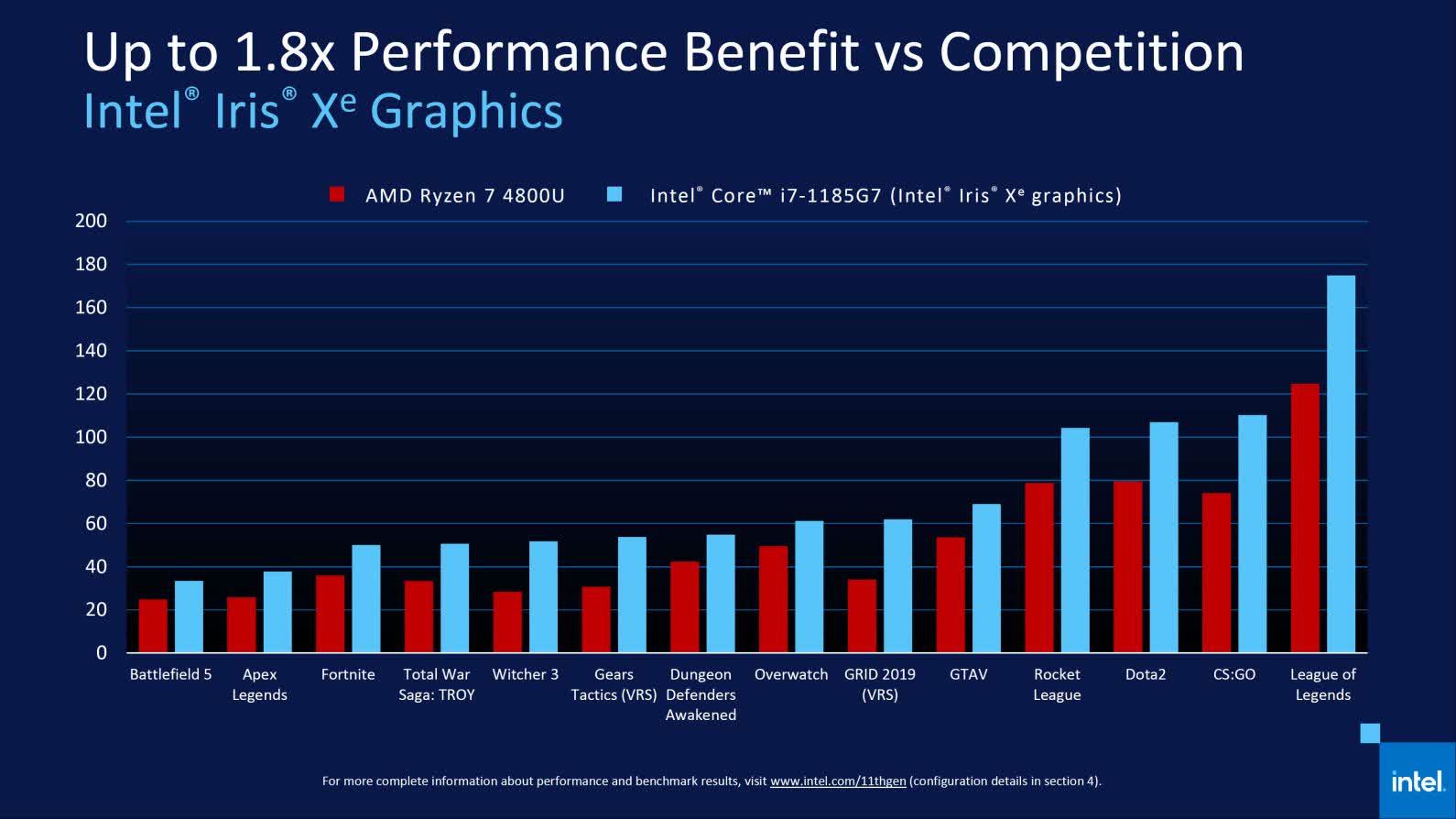
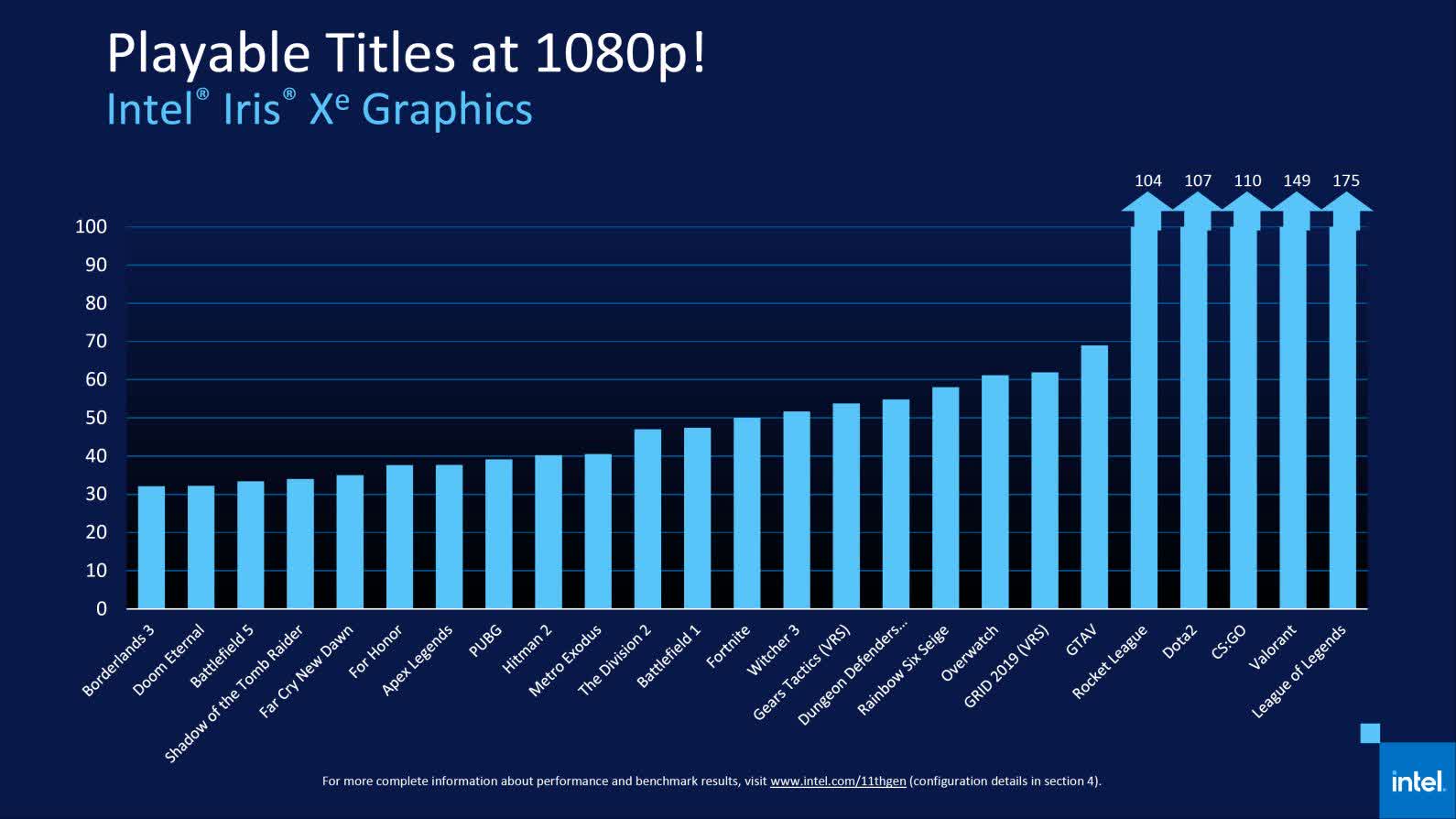
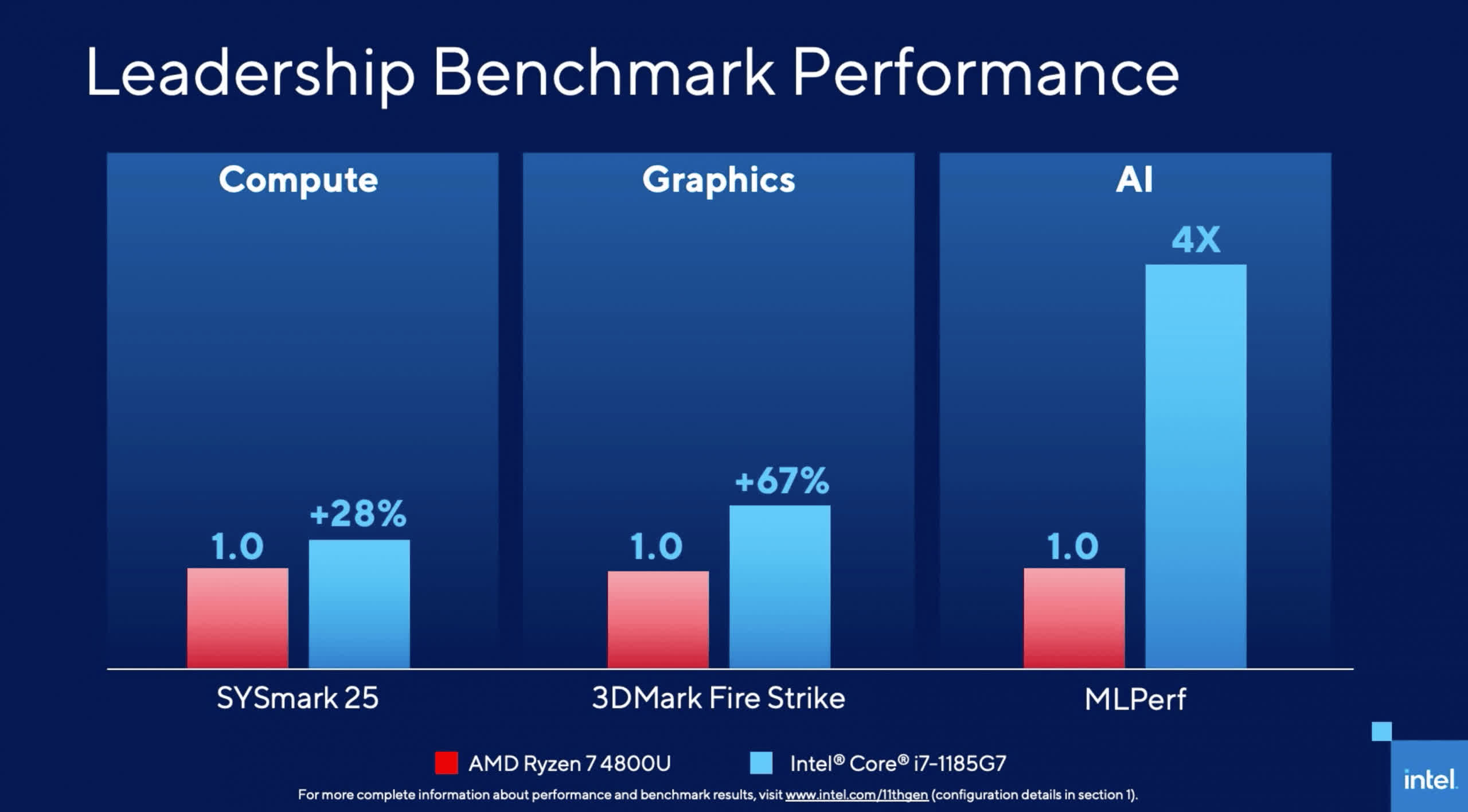
"[Tiger Lake delivers] up to 2.7x faster content creation, more than 20% faster office productivity, and more than 2x faster gaming plus streaming in real-world workflows. More than 150 designs based on 11th Gen Intel Core processors are expected from Acer, Asus, Dell, Dynabook, HP, Lenovo, LG, MSI, Razer, Samsung, and others, with more than 20 verified designs expected this year. They represent Intel’s most ambitious system-on-chip (SoC), delivering more than a generational leap in performance and the best experiences for U-series laptops in productivity, creation, gaming, entertainment and collaboration"
Intel claims the Core i7-1185G7 can outperformed the Ryzen 7 4800U by a healthy margin in most gaming benchmarks, which you can find on its website. Keep in mind that OEM TDP configurations and other factors are going to swing the needle widely. So take Intel's ideal test conditions with a grain of salt. We'll want to wait for our own benchmarks to see how the new silicon measures up on a level and practical playing field.
https://www.techspot.com/news/86613-intel-launches-tiger-lake-cpus-xe-graphics-laptops.html